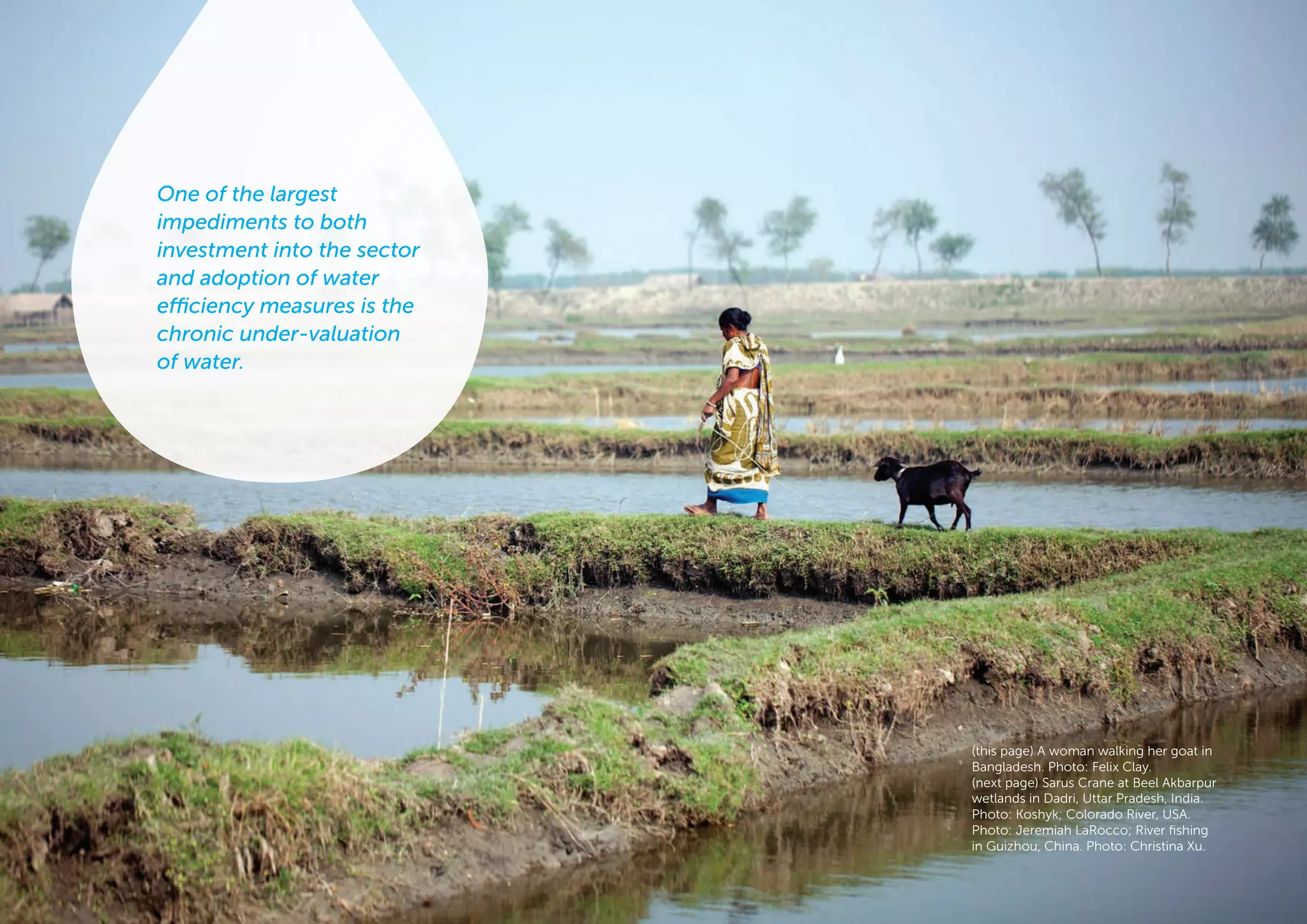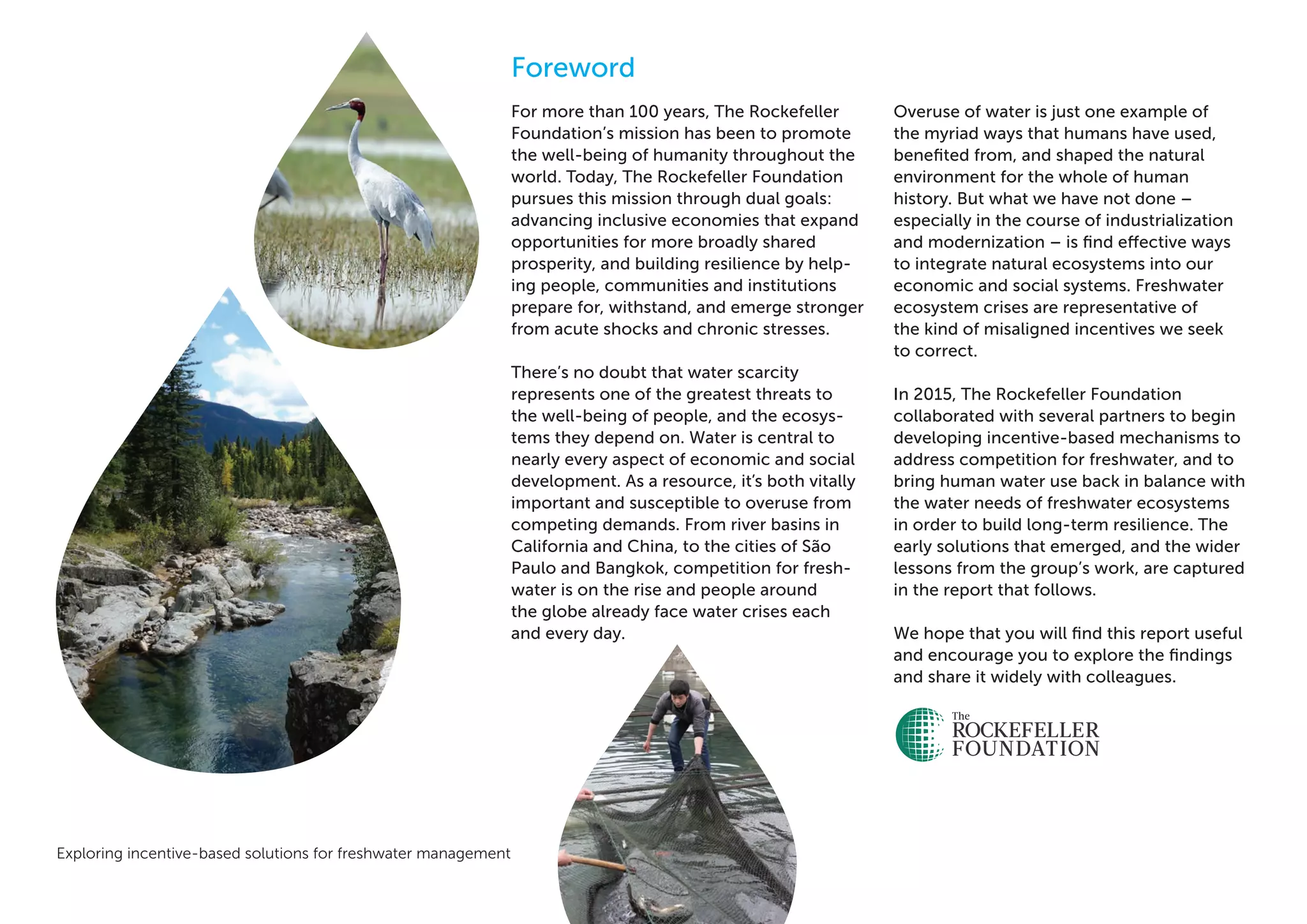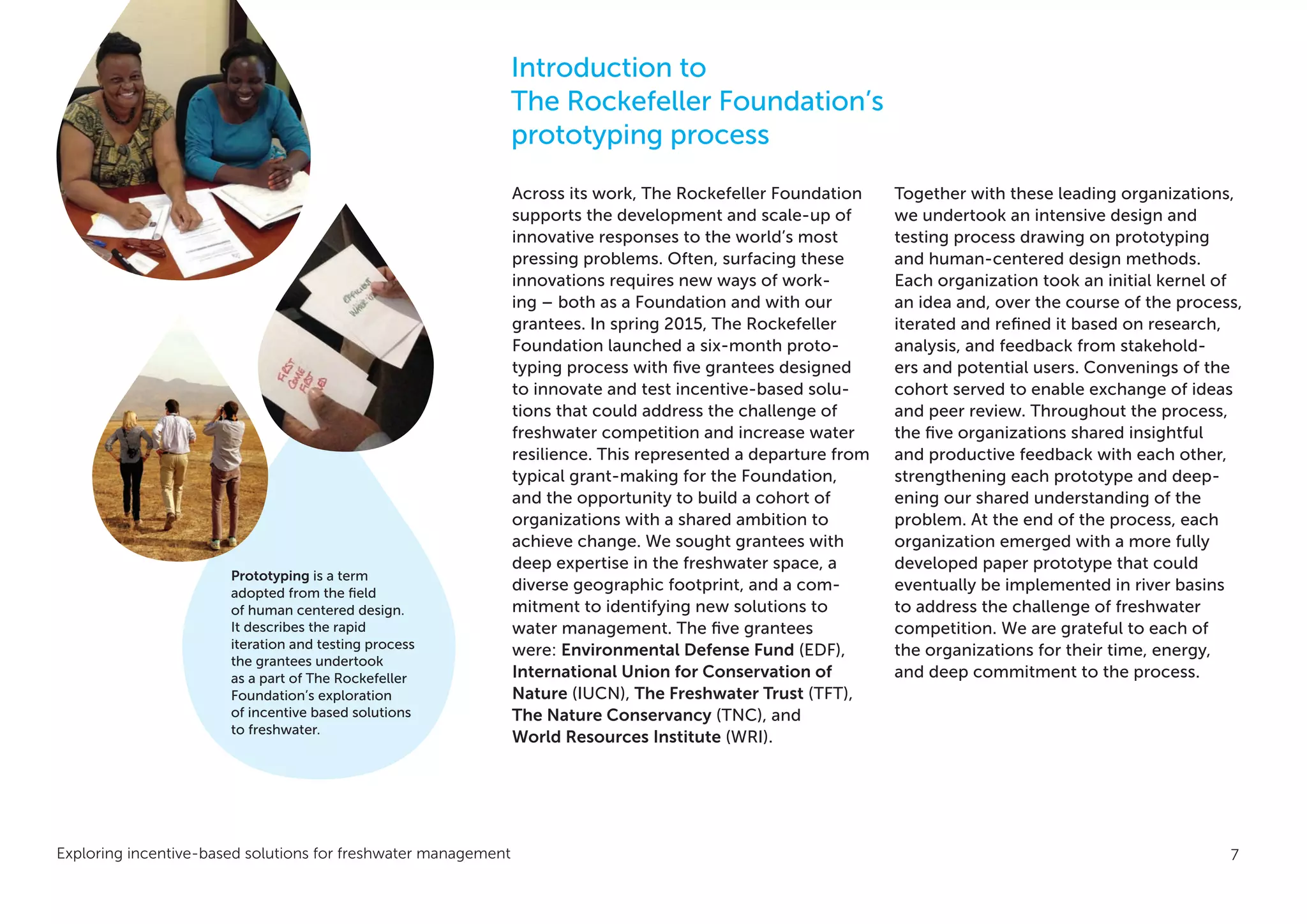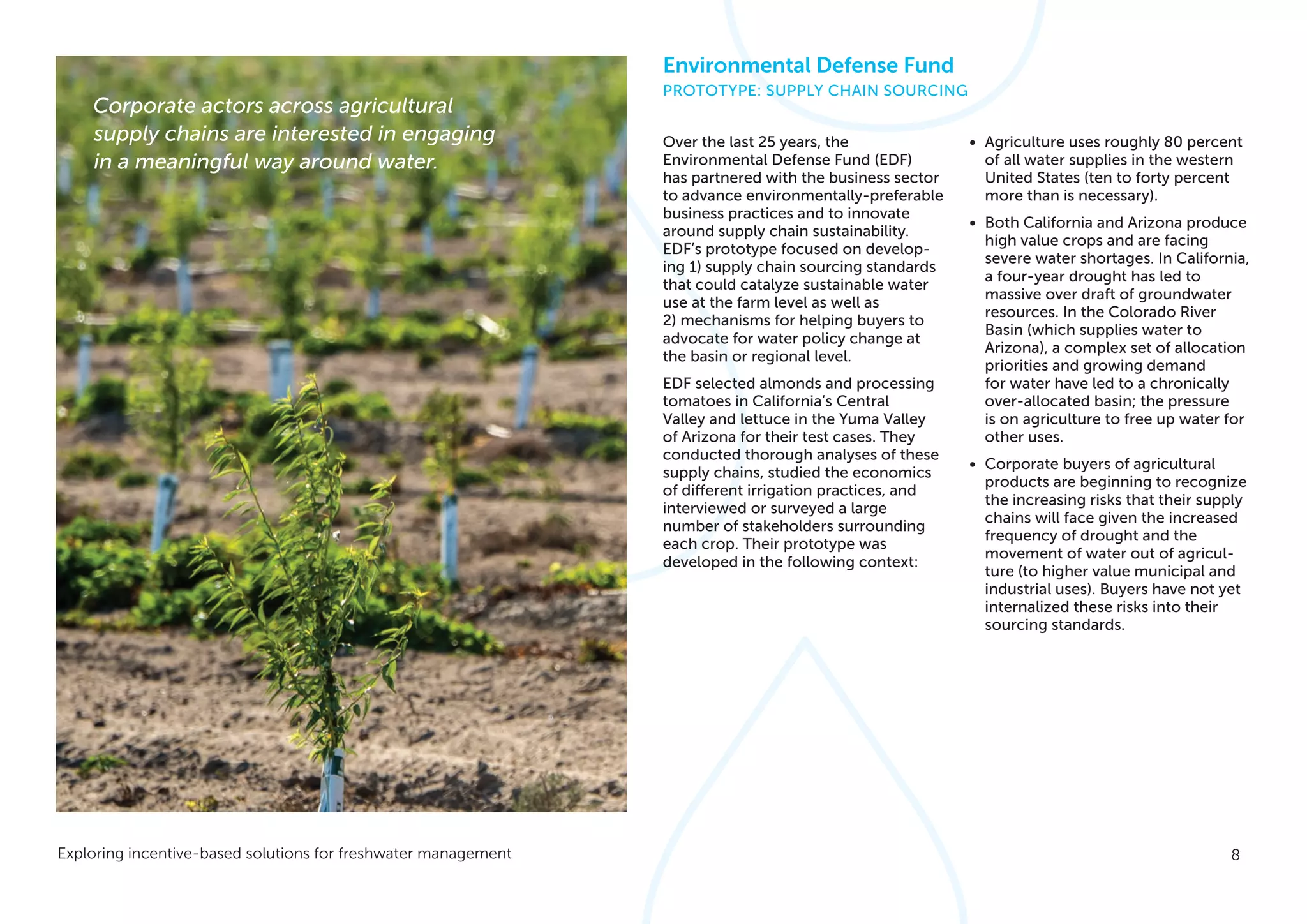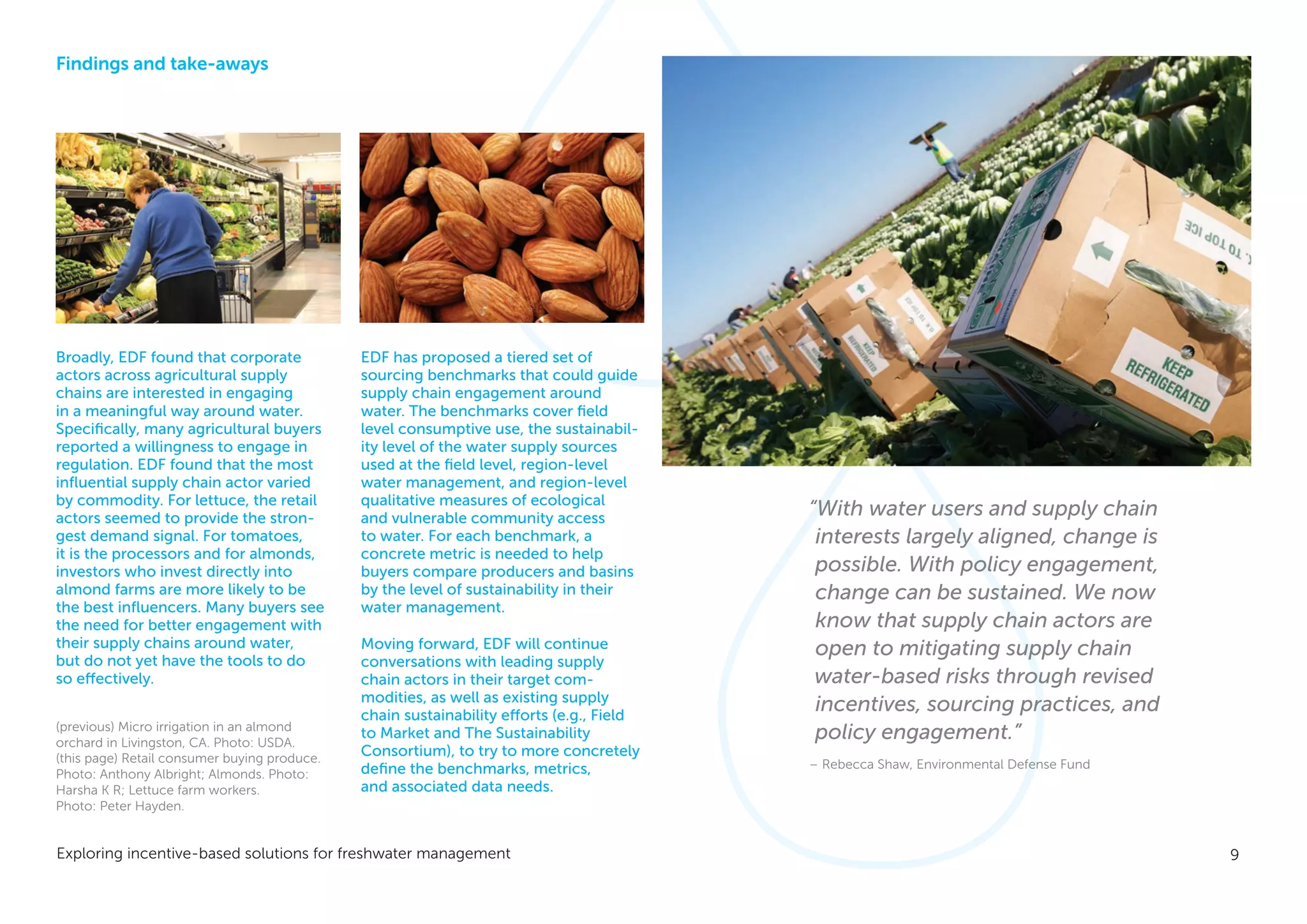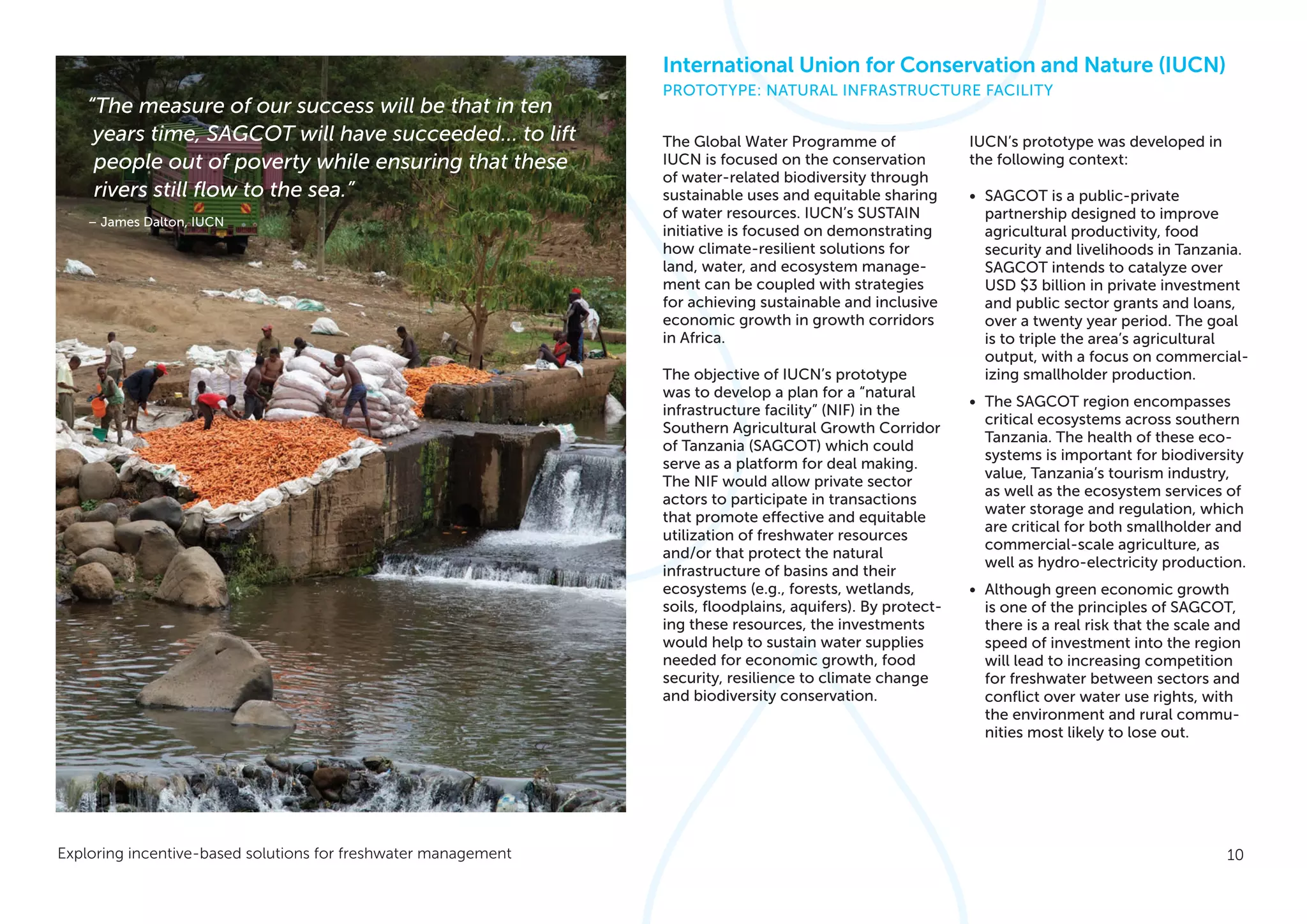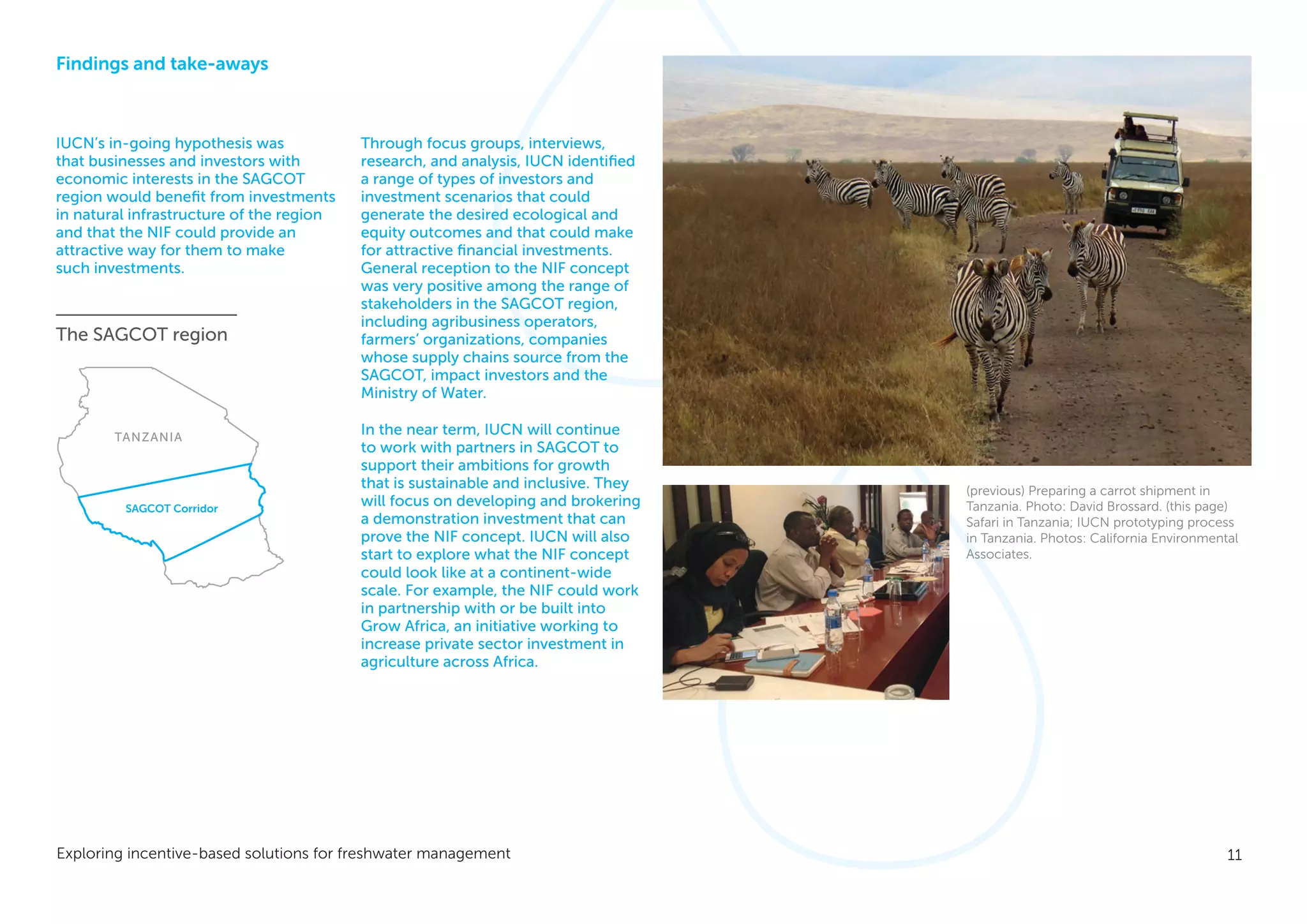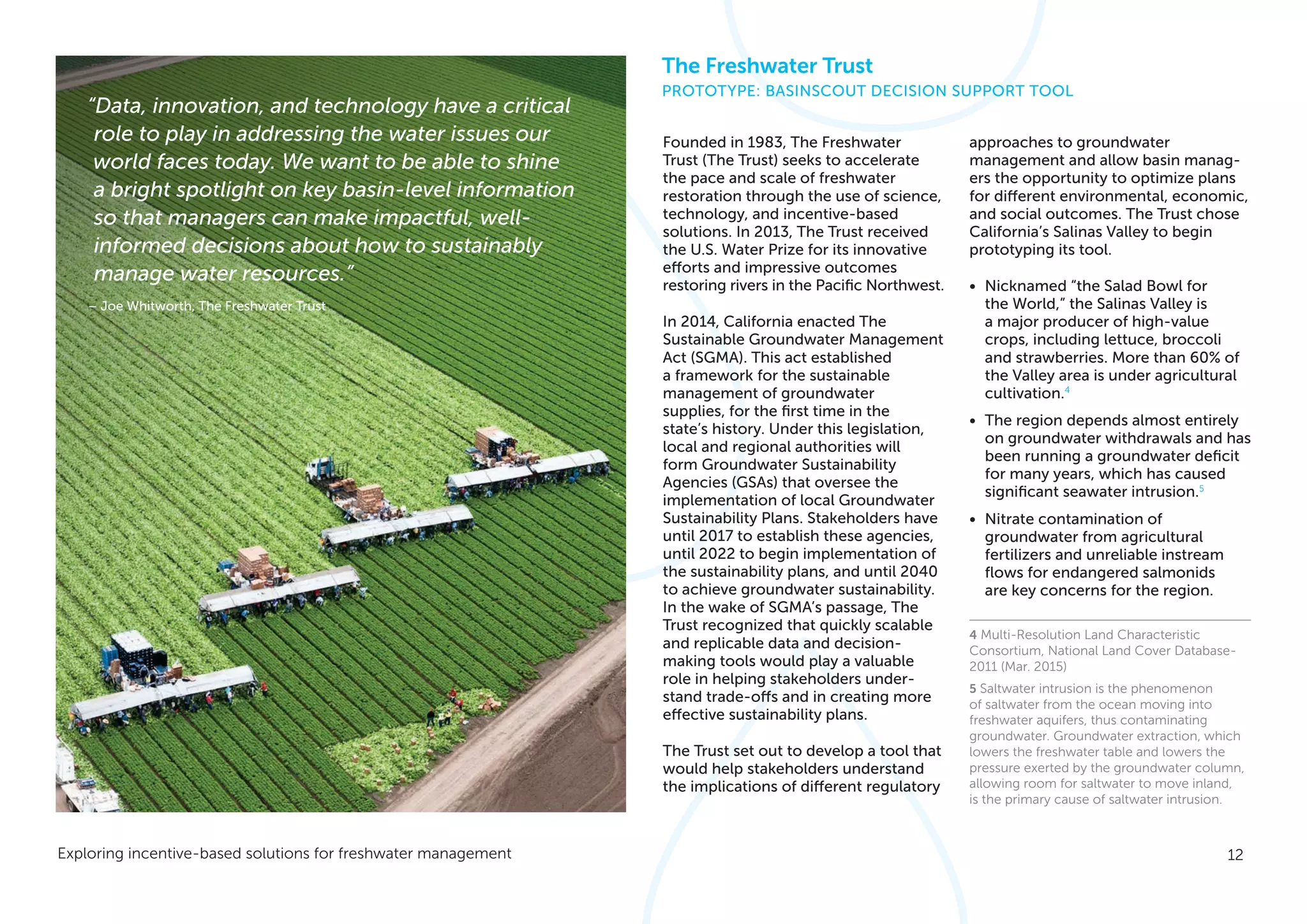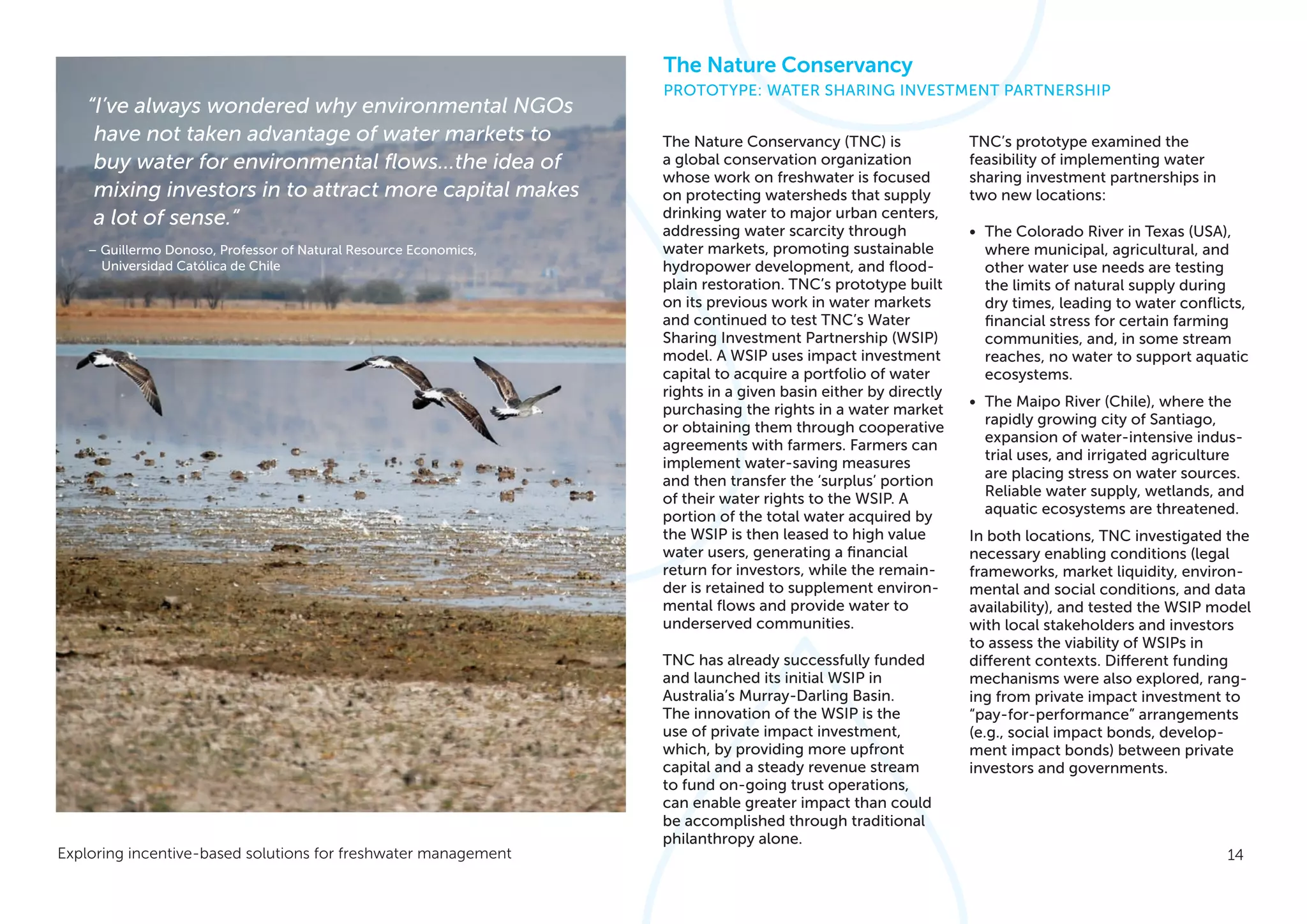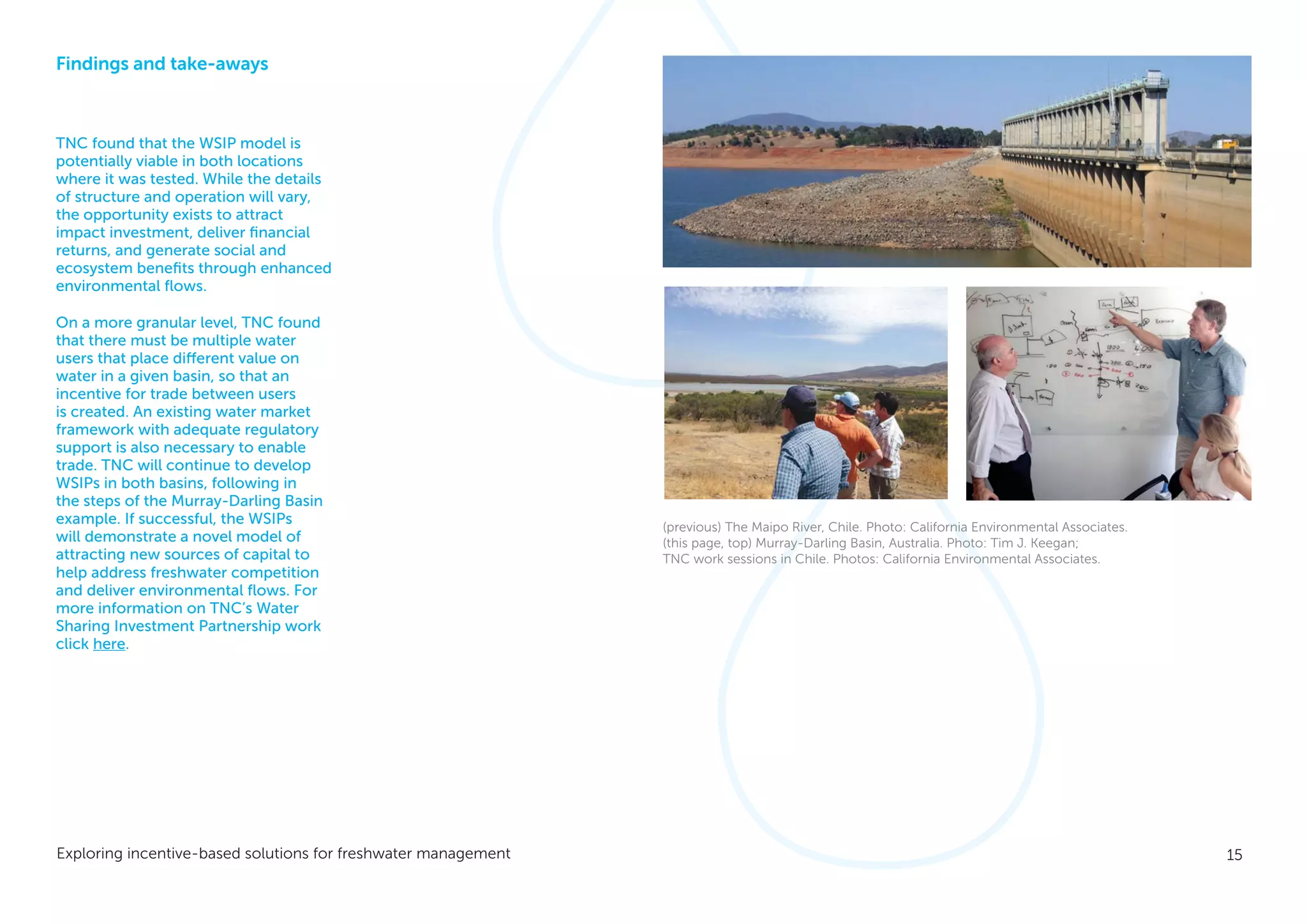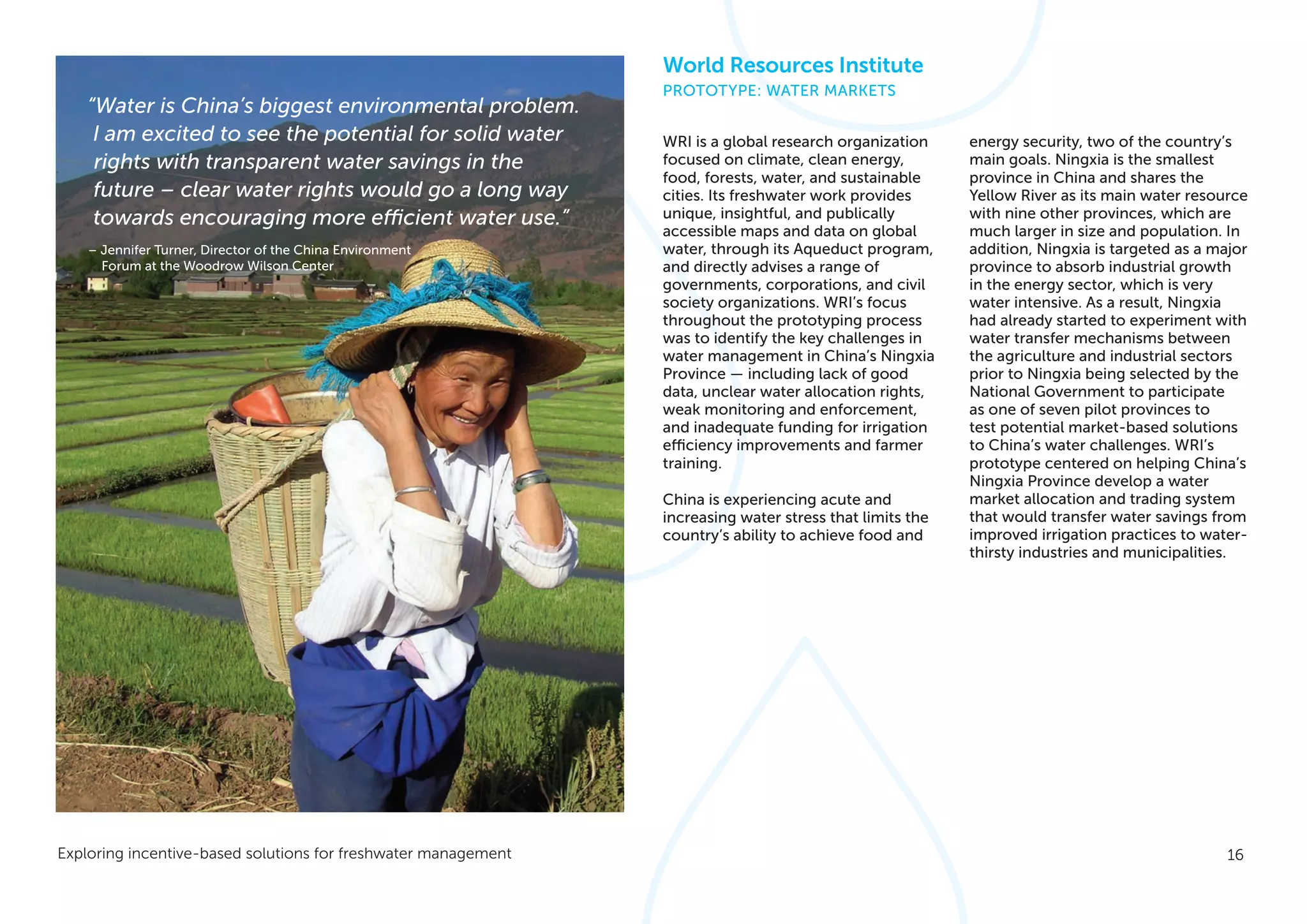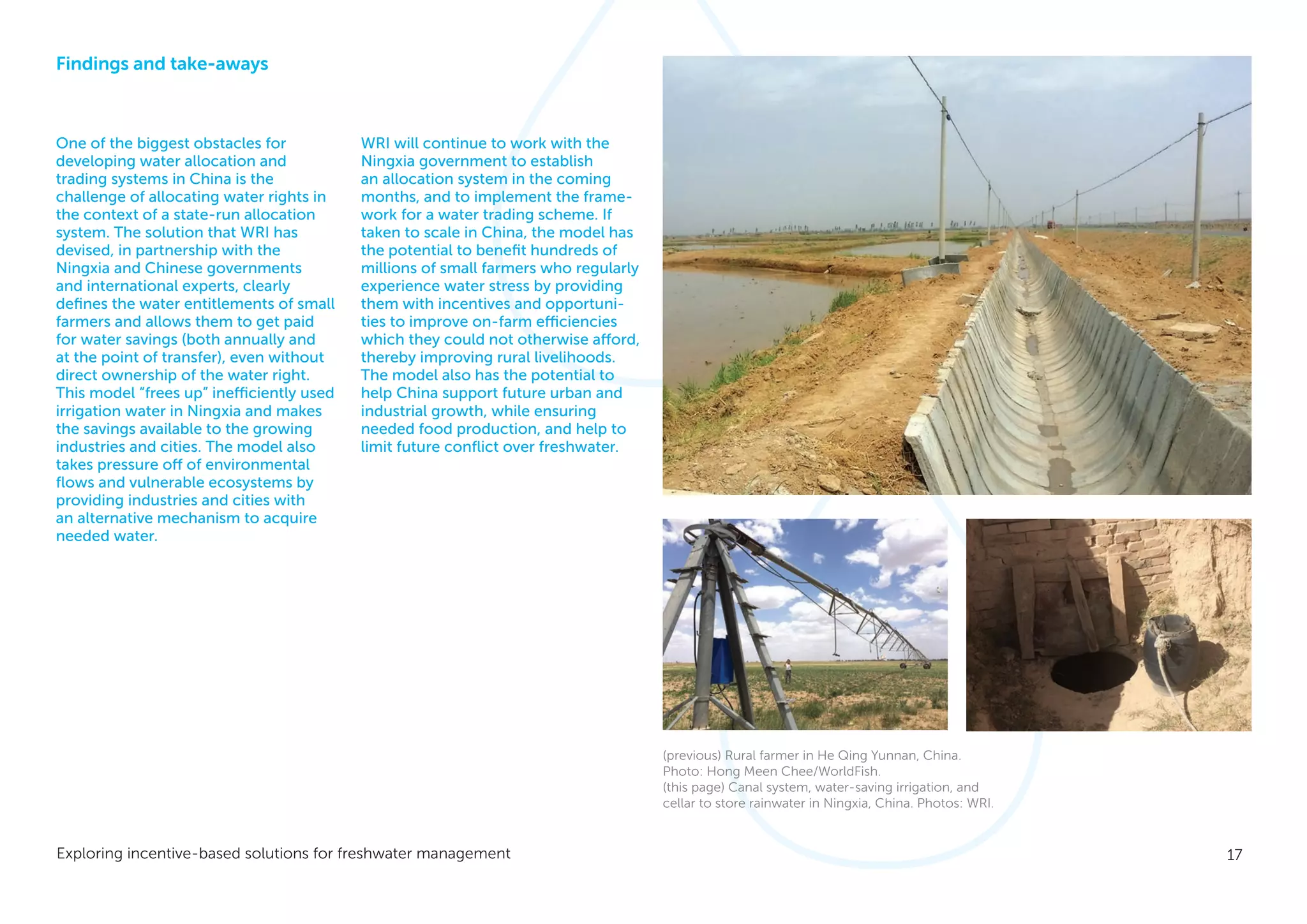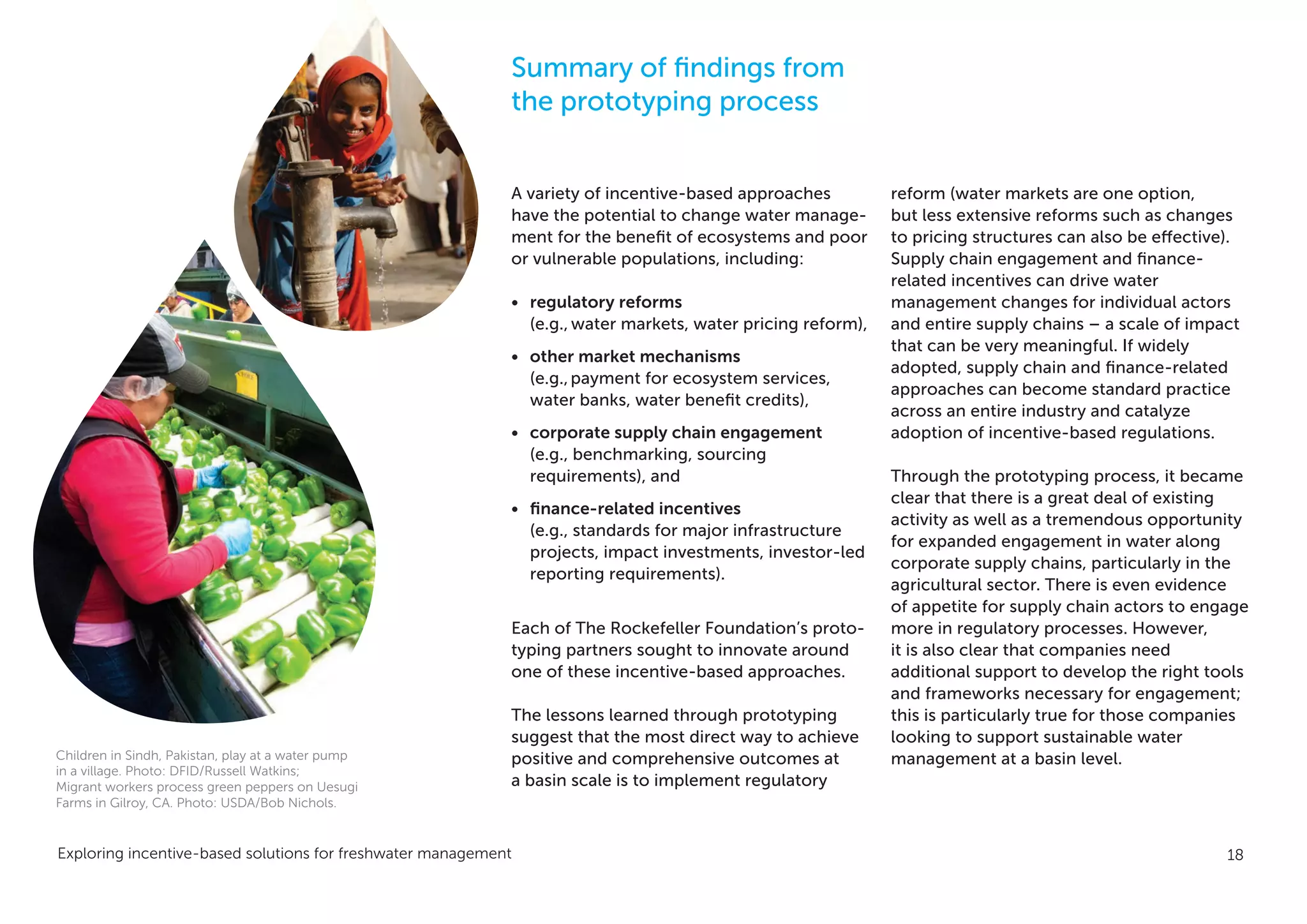The document discusses the Rockefeller Foundation's exploration of incentive-based solutions for freshwater management to address global water scarcity and the competition for freshwater resources. It highlights the significance of integrating natural ecosystems into economic systems and the necessity for innovative approaches to improve water efficiency and resilience. Through a collaborative prototyping process with various organizations, the Foundation aims to develop mechanisms that balance human water use with ecosystem needs while enabling equitable access to water resources.

